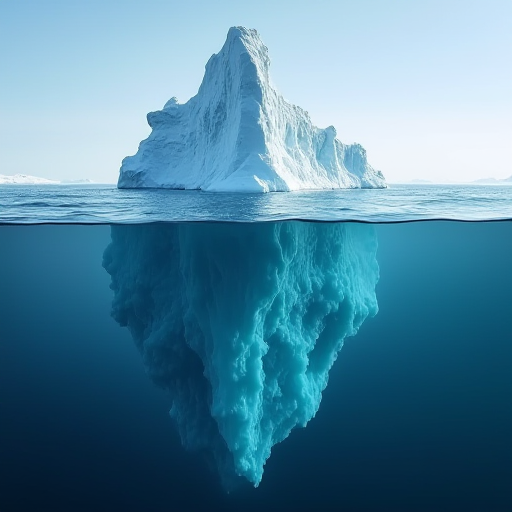
Why Do Icebergs Float?
Icebergs are one of nature's most fascinating phenomena, often seen as majestic white giants drifting in the ocean. Their ability to float, despite their massive size, is a wonder of physics and an example of the intriguing properties of water. Understanding why icebergs float requires an exploration into the principles of buoyancy, the properties of water, and the unique characteristics of ice.
The Principle of Buoyancy
The primary reason icebergs float is due to the principle of buoyancy, which is governed by Archimedes' Principle. This principle states that any object submerged in a fluid is buoyed up by a force equal to the weight of the fluid that the object displaces. In simpler terms, an object will float if it can displace enough water to equal its own weight.
For icebergs, this means that as long as the weight of the water displaced by the submerged portion of the iceberg equals the weight of the iceberg itself, it will float. This principle applies to all floating objects, whether they are ships, logs, or icebergs.
The Density of Ice versus Water
Key to understanding why icebergs float is the density differential between ice and liquid water. Density is defined as mass per unit volume. Water has its maximum density at about 4°C (39°F), and when it freezes into ice, it expands. This expansion occurs because the water molecules form a crystalline structure that takes up more space than in its liquid form.
As a result, ice is less dense than liquid water. Specifically, ice has a density of about 0.92 grams per cubic centimeter, whereas liquid water at 0°C has a density of approximately 1.00 grams per cubic centimeter. The lower density of ice compared to liquid water means that ice is buoyant and will float.
The Composition of Icebergs
Icebergs are typically formed from freshwater that originates from glaciers or ice shelves. When pieces of glaciers break off and fall into the ocean, they form icebergs. Since these icebergs are composed mostly of fresh water, their density remains lower than that of the saltwater in which they float.
Saltwater has a higher density than freshwater due to the dissolved salts. This increased density further enhances the buoyancy of icebergs, allowing them to float even more effectively in oceanic conditions.
The Visible and Hidden Parts of an Iceberg
One of the most striking aspects of icebergs is the fact that only a small portion of them is visible above the waterline. Typically, about 10% of an iceberg is above the surface, while the remaining 90% is submerged. This distribution is again a function of density and buoyancy. The submerged part of the iceberg displaces an amount of water equal to its total weight, ensuring that the iceberg remains afloat.
This phenomenon is why the phrase "the tip of the iceberg" is often used metaphorically to indicate that there is much more beneath the surface than what is visible.
Environmental and Climatic Implications
Icebergs play crucial roles in the Earth's ecosystems and climate systems. They transport freshwater from polar ice caps into the oceans, affecting ocean circulation patterns. As they melt, they can also influence sea levels and local ecosystems.
The floating of icebergs also has implications for climate change. As global temperatures rise, the rate of iceberg calving and melting increases, contributing to rising sea levels. Understanding how icebergs float and interact with their environment helps scientists predict and model these changes.
Conclusion
The ability of icebergs to float is a testament to the fascinating interplay of physics, chemistry, and environmental science. The principles of buoyancy and the unique properties of water and ice combine to create these remarkable floating giants. As we continue to study icebergs, we gain insights not only into their mechanics but also into broader climatic and environmental dynamics.
